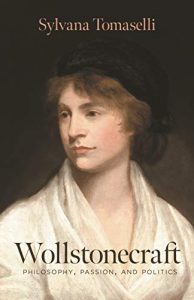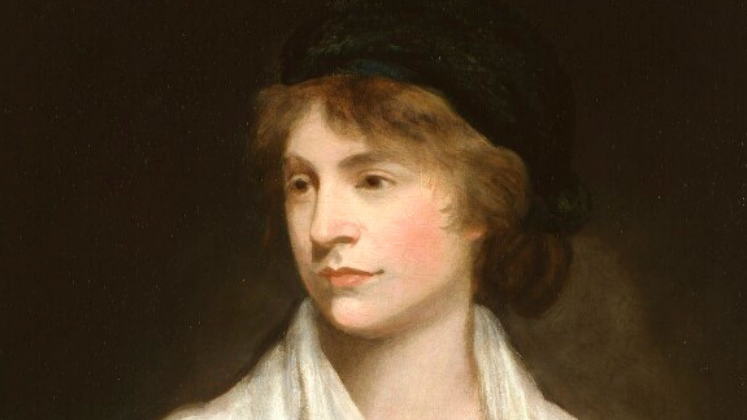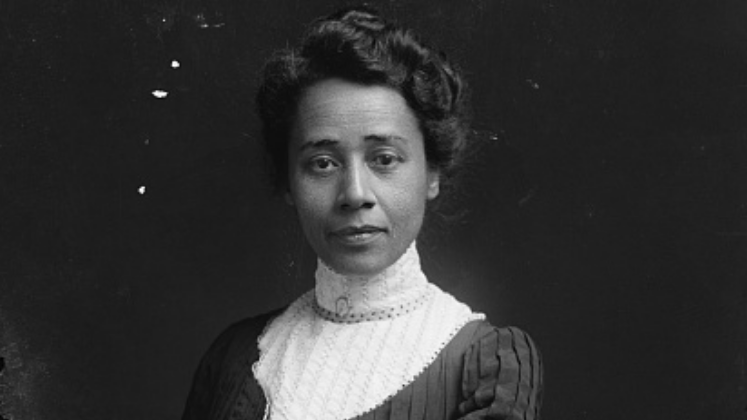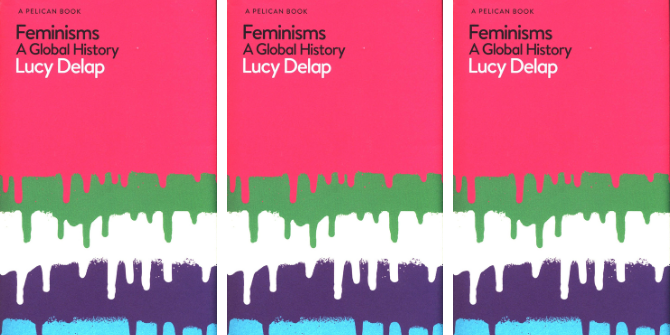In Wollstonecraft: Philosophy, Passion, and Politics, Sylvana Tomaselli brings together Wollstonecraft’s many disparate writings to create a full picture of her philosophy and life. Combining ease of reading, academic rigour and captivating writing, this brilliant book reveals the powerful and often revolutionary thought of Wollstonecraft and has something new to reveal to all of us about this philosophical giant, writes Isobel Clare.
Wollstonecraft: Philosophy, Passion, and Politics. Sylvana Tomaselli. Princeton University Press. 2020.

In Wollstonecraft: Philosophy, Passion, and Politics, Sylvana Tomaselli offers a holistic view of a woman whom many readers may only know by her most famous work, A Vindication of the Rights of Woman: With Strictures on Political and Moral Subjects (1792). In this thoroughly researched and fast-paced book, Tomaselli brings together Wollstonecraft’s many disparate writings to create a full picture of her philosophy and her life. In so doing, Tomaselli shows the powerful, and often times revolutionary, thoughts of Wollstonecraft and adds to the growing body of work which seeks to elevate Wollstonecraft to her rightful position as one of the major political and philosophical thinkers of the eighteenth century.
Wollstonecraft tragically died at 38 after giving birth to her second daughter, Mary, and never had the opportunity to write a full and coherent philosophy of life and politics. Tomaselli, by weaving together many of the themes of Wollstonecraft’s writings, presents us with as close to this work as we may ever get.
In the style of one of Wollstonecraft’s early works, Thoughts on the Education of Daughters (1787), Tomaselli artfully brings together different themes from Wollstonecraft’s life and writings – including short essays on ‘The Theatre’ (14), ‘Human Nature’ (73), ‘Evil and Perfection’ (114) and ‘Idleness’ (160) – building a picture of not just an extraordinary life, but also of an extraordinary philosophy.
Tomaselli begins by situating Wollstonecraft in her historical context – something Wollstonecraft would have likely enjoyed, given her own proclivity for historical writing. Together with demonstrating the significance of the French Revolution on Wollstonecraft’s work, and her responses to figures such as Edmund Burke and Jean-Jacques Rousseau, Tomaselli sheds light on several female contemporaries of Wollstonecraft who were also writing and working for equality and justice. In this context of an often forgotten milieu of female philosophers and political activists, Tomaselli argues that it is Wollstonecraft’s wit, her critical eye and mind and her penchant for telling the unabashed truth that (alongside her ability to deftly tackle major philosophical and political issues) merits this examination of her life and work.

Image Credit: Crop of ‘Mary Wollstonecraft’ by John Opie, oil on canvas, circa 1797. NPG 1237. © National Portrait Gallery, London. This image is provided by the National Portrait Gallery under license CC BY-NC-ND 3.0
In the first chapter, Tomaselli devotes time to ‘What [Wollstonecraft] Liked and Loved’ (12). Through this chapter we see Wollstonecraft as a full person, who was passionate about the arts, and who loved her few close friends dearly, and her daughter, Fanny, even more so. Tomaselli also begins to hint at themes that guided Wollstonecraft’s view of the world and that are echoed throughout her political and philosophical writings, such as her disdain for the artificial and her religious beliefs. The rest of the book is dedicated to an attempt to construct a philosophy of Wollstonecraft, as she might have written it herself had she lived long enough.
The second chapter sees Tomaselli explore Wollstonecraft’s understanding of the nature of humanity. A fierce advocate of the equality of potential for all humans, we see how Wollstonecraft was appalled by the inequities of her day, from the class structure she ridiculed, to her damning treatment of the state of womankind, to her hatred of slavery. Highlighting Wollstonecraft’s often forgotten fundamental belief in the equality of all people and her criticism of the slave trade, as well as her propensity for brazen criticism, Tomaselli quotes Wollstonecraft’s rebuke of Burke in A Vindication of the Rights of Men (1790): ‘our ignorant forefathers, not understanding the native dignity of man, sanctioned a traffic that outrages every suggestion of reason and religion’ (71).
The final short essay in this chapter is dedicated to that which underpins much of Wollstonecraft’s philosophy: her faith in God. That Wollstonecraft’s love of reason and imagination as propelling humanity to reach its full potential was underpinned by a belief that these are God-given traits is a fascinating theme that Tomaselli begins to develop. It would have been interesting to see this theme explored more fully as it is clear that Wollstonecraft’s idea that humanity possesses an intrinsic capacity for good is grounded in this faith. Much of the rest of her arguments about philosophy, politics and the trajectory (both real and potential) of history are based upon this belief.
In the third chapter, Tomaselli writes Wollstonecraft’s account of the history of civilisation and her understanding of the world in which she existed. Wollstonecraft took an Enlightenment view of the progress of civilisation, but was not uncritical. ‘Her history should have told of the gradual improvement of human understanding, but it did not’ (125). Whilst she saw some progress in history, she also noted the inequality within this progress.
It is in this chapter that Tomaselli persuasively writes of the revolutionary nature of Wollstonecraft’s politics. Where Burke was critical of the French Revolution as not merely political, but as containing the potential for altering the social, cultural and economic foundations of European civilisation, Wollstonecraft argued that this was what it ought to be to deliver a just and good world that would achieve liberty for all. Wollstonecraft is often cast as a liberal feminist, intent on the rights of women being enshrined and protected in law. Tomaselli shows us this was the least of Wollstonecraft’s concerns and aims. Her beliefs were much more radical, and concerned the liberty of people not limited to the educated woman. Wollstonecraft saw potential in the French Revolution for far more than political change; she thought through education the values and beliefs – what we might now call norms – of society could be changed to value that which was truly important. For Wollstonecraft, this would be a revolution based on selfless love for all, reason and imagination, which would bring about a world in which all humans could truly flourish.
Tomaselli’s fourth chapter focuses on Wollstonecraft’s plans to achieve such a world. Here Tomaselli elaborates on Wollstonecraft’s wish for a conceptual shift in what it meant to be a woman – and a man. We also see how deeply personal this work was for Wollstonecraft through Tomaselli’s interweaving of letters Wollstonecraft wrote about raising her daughter, Fanny, and the kind of future she ought to prepare her daughter for. Tomaselli provides us with a taste of what Wollstonecraft imagined true citizenship to mean, and what she believed human potential could achieve in a just world.
The final chapter is a reflection on Wollstonecraft’s life and a call for us to see her not just as the author of A Vindication of the Rights of Woman, but as the significant eighteenth-century writer and philosopher that she was. Readers will get to know this philosophical giant in a new and exciting way, discovering her many passions and, through Tomaselli’s often humorous telling, her wit.
Tomaselli presents Wollstonecraft as many readers will not know her – as a whole person, with passions and flaws, deeply critical philosophies and radical politics. This book thoughtfully and thematically walks the reader through Wollstonecraft’s work, developing a coherent philosophy from which we still have much to learn. Wollstonecraft: Philosophy, Passion, and Politics is brilliant in its combination of ease of reading, academic rigour and captivating writing. Whether the reader is an undergraduate student, seeking to place Wollstonecraft in greater context, an intrigued member of the public or a seasoned professor of political theory, Tomaselli’s work is accessible to all and has something new to reveal to all of us about a remarkable woman that history is just beginning to remember fully.
Note: This review gives the views of the author, and not the position of the LSE Review of Books blog, or of the London School of Economics and Political Science.







